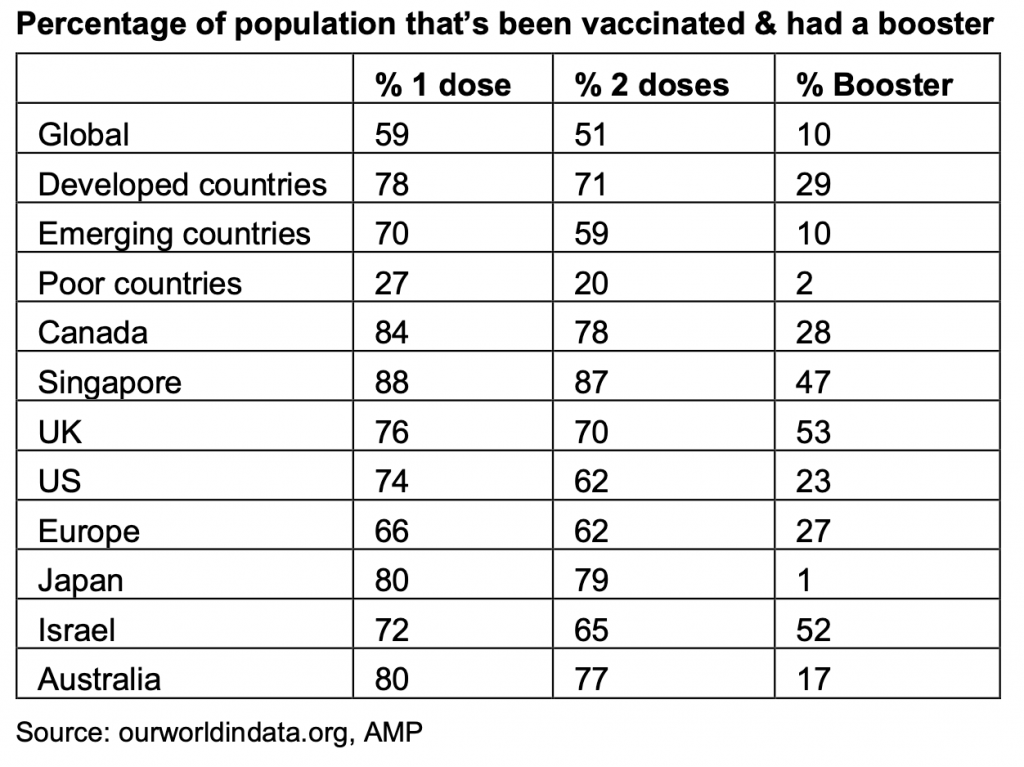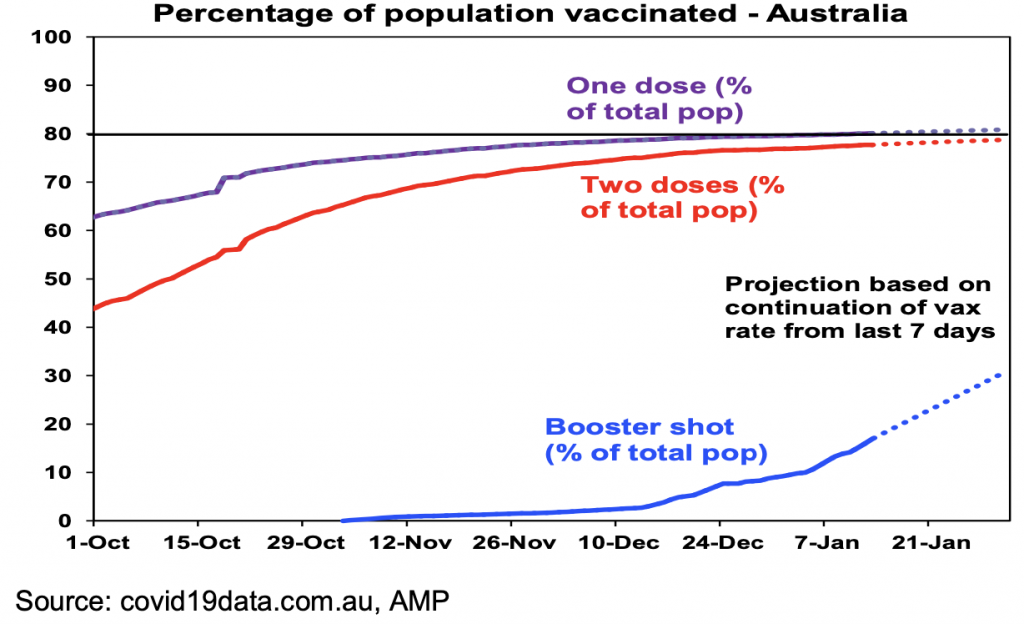

Investment markets & key developments
Global share markets remained under pressure over the past week from concerns about rising US inflation and faster US interest rate hikes. Omicron related disruptions and tensions with Russia over Ukraine are not helping although markets don’t appear to be too concerned about Omicron. For the week US shares fell 0.3%, Eurozone shares fell 0.9%, Japanese shares lost 1.2% and Chinese shares fell 2%. The weak global lead weighed on the Australian share market which fell 0.8% with declines in retailers, tech and property stocks more than offsetting gains in resources and utilities. Long term bond yields were flat to up slightly. Oil, metal, gold and iron ore prices rose as did the $A, as the $US fell. The relative strength of commodity prices, resources stocks and the $A are a positive sign from a cyclical perspective.
Unfortunately, this year has started off dominated by coronavirus yet again as new cases have ballooned driven by the more transmissible Omicron variant – although so far markets appear to be looking through it to some degree. This partly reflects that while Omicron is highly transmissible it is proving to be less harmful, and governments are so far mostly avoiding hard lockdowns. However, the surge in cases is driving self-regulation and many having to isolate impacting both demand and supply making the situation akin to a lockdown in some countries (including parts of Australia), and this will hit first quarter economic activity both globally and in Australia, before another sharp rebound once the Omicron wave subsides. China is particularly at risk as its vaccines are reportedly less effective and its covid zero policy risks resulting in more lockdowns adding to global supply shortages.
US inflation rose to near a 40 year high in December of 7% and putting more pressure on the Fed. The Fed already took a hawkish turn late last year and this has been reinforced by recent comments from various Fed officials including Chair Powell. We expect inflation to ease a bit this year as production increases and spending rotates from goods back to services but the Omicron wave and associated further supply setbacks risks delaying this. And with a tight labour market and accelerating wages growth in the US there is a rising risk that high inflation will become entrenched. As a result, we now see the Fed raising rates in March, hiking 4 or 5 times this year and starting quantitative tightening in the second half. However, while this will contribute to a more volatile ride for US and hence global shares its unlikely to be enough to end the economic recovery and cyclical bull market as monetary policy will still be relatively easy and other major central banks including the RBA will lag the US, with China’s central bank actually easing monetary policy this year.
Coronavirus update
The Omicron variant, which has come to dominate globally, has seen global coronavirus cases surge, led in particular by Europe and the US. Australia has been no exception. The bad news – which was all known in mid-December before the global surge occurred - is that its far more transmissible than Delta and results in prior coronavirus infection and vaccines providing much less protection against infection.
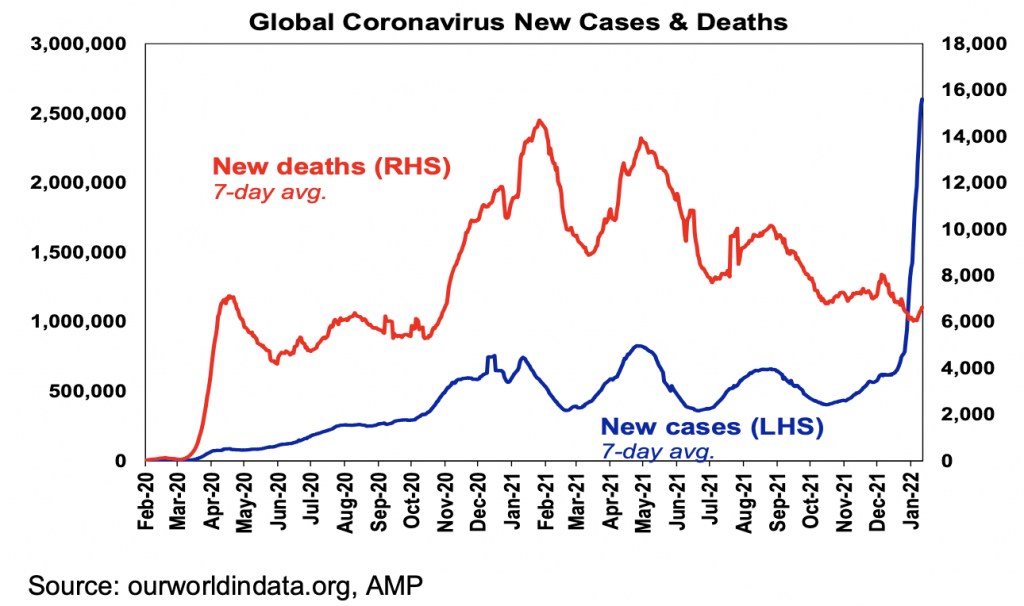
The good news is that its far less harmful than Delta (maybe up to 20% less so), a booster shot from a mRNA vaccine (Pfizer or Moderna) appears to offer significant protection from infection and against severe disease and hospitalisation and new tweaked vaccines are on the way. That it is less harmful is evident in deaths and hospitalisations remaining far more subdued through this wave, even once lags are allowed for. This is evident in the chart above for deaths globally, but its also evident in Europe, the UK, the US, Canada and Israel. See the next charts for Europe and the UK – but they all show a similar pattern.
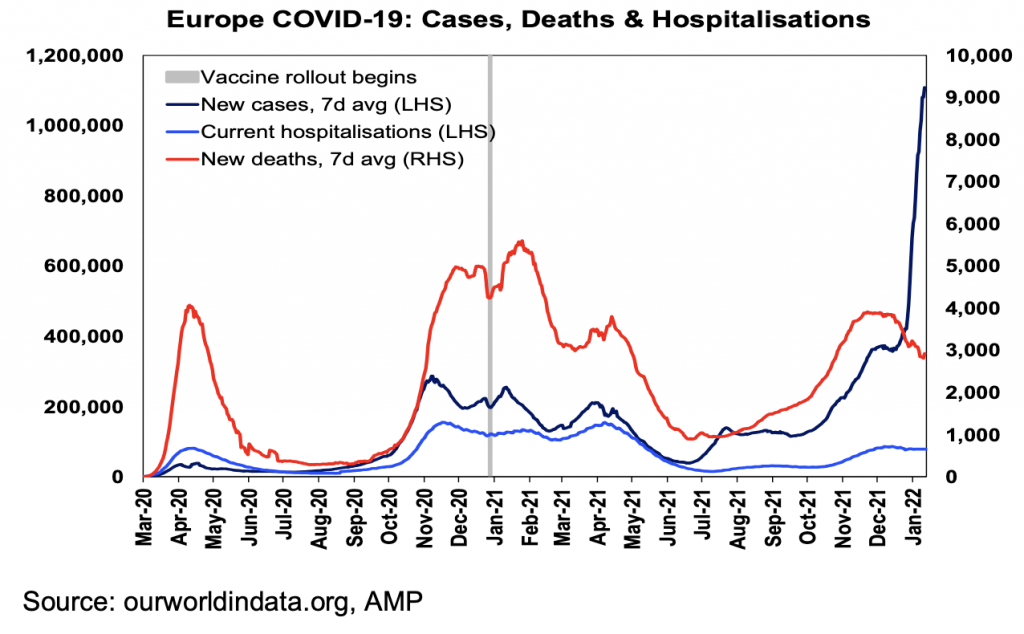
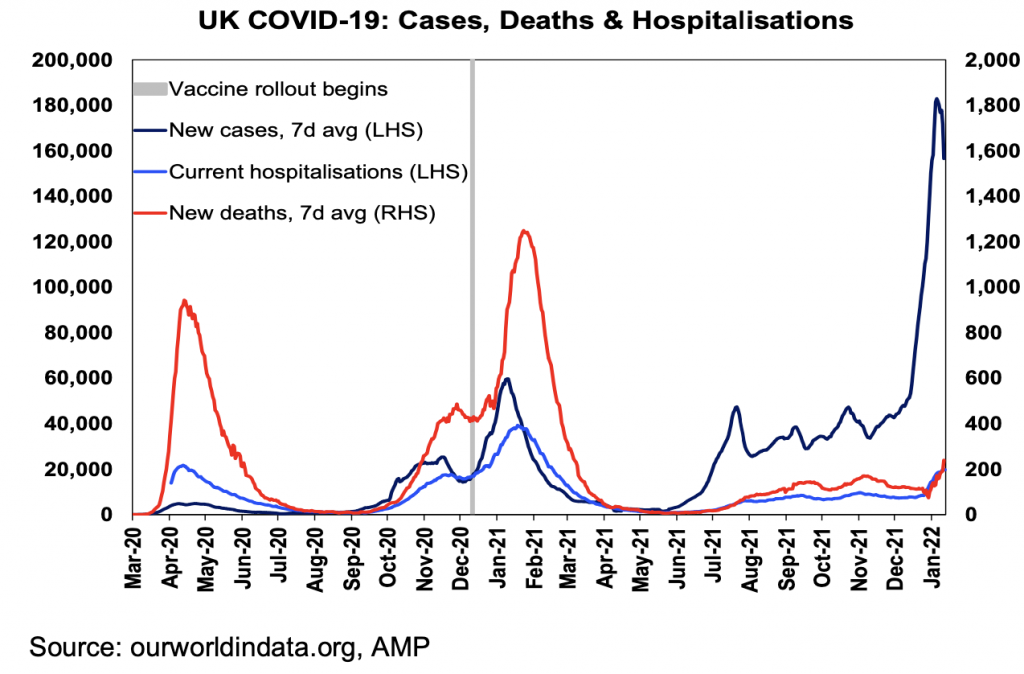
In Australia, the greater transmissibility of Delta combined with the further removal of restrictions from November not helped by the relatively low level of prior exposure and booster shots have seen cases explode relative to the levels seen through the Delta wave. (And given problems with testing, the case data is probably massively understated.) The good news is that, as has been the case globally, Omicron is proving less harmful and so hospitalisations and deaths remain subdued relative to the surge in cases compared to previous waves. See the next chart. Data from NSW Health - albeit only up to late December shows - that whereas 4% of Delta cases ended up in hospital around 1% of confirmed and probable Omicron cases do so. And while new deaths are at record levels they are running around 13% of the level suggested by the 2020 wave reflecting protection from vaccines and Omicron being less harmful. (Its similar in the UK.)
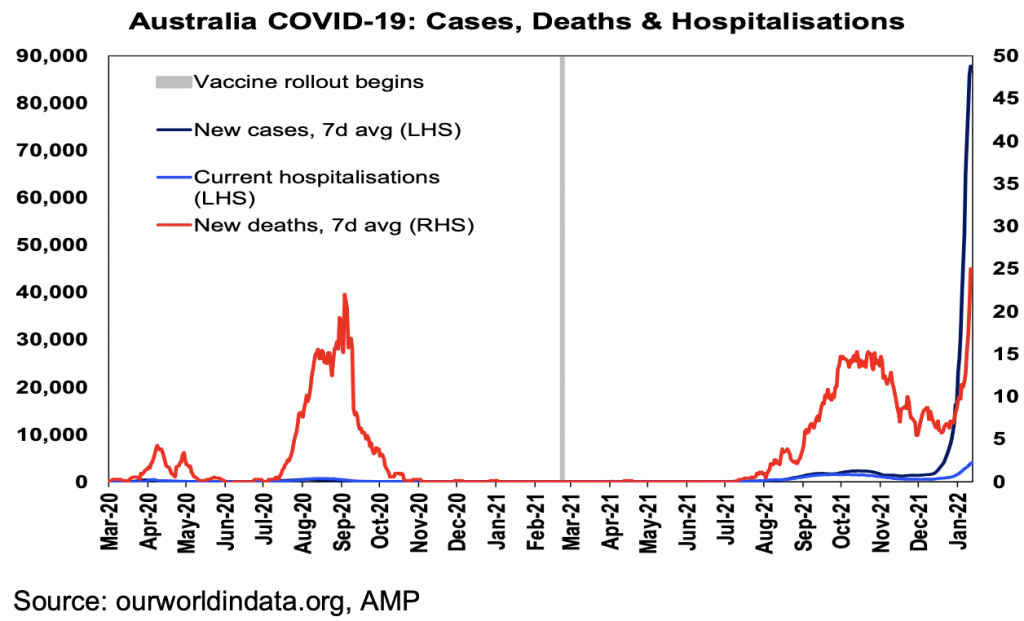
The problem of course is that the explosion in cases is still leading to a surge in hospital cases (even though a lower proportion are getting seriously ill) leading to significant stress in the health care system. This along with the sheer number of people having to isolate is impacting both demand and supply in the economy and hence a hit to economic activity without having a formal lockdown. All of which highlights the case to have at least tried to slow down the spread with mild restrictions back in December rather than continue removing restrictions which were having little economic impact and which we feared for NSW was like playing Russian Roulette with the economic recovery. At this stage we have revised down our March quarter GDP growth forecast to 0.6% from 1.6%, but this is a guesstimate and while we are confident of a strong post Omicron rebound in the economy resulting in growth of 4% or so through the year the risk is high that the March quarter sees GDP go backwards again given the extent of supply disruptions.
Beyond the near-term uncertainties there are two other positives. New Omicron cases may have peaked in South Africa, the UK (see chart above), Canada and New York – of course we have less natural immunity but it could be a pointer to a peak in Omicron cases in Australia sometime in the next month or so. Secondly there remains good reason to believe that this could be the worst of yet (yeah I know I may have said that before): if Omicron with its lower virulence but greater transmissibility comes to dominate the other variants then it along with increasing levels of natural immunity, protection from vaccines and new covid treatments could put Covid-19 on to a path to becoming endemic like the common cold or flu.
On the vaccine front 51% of the global population have had two vaccine doses, with only 10% having had a booster shot. The risk is in poor countries where only 20% have had two doses and just 2% have had a booster. It’s in the rich world’s interest to help vaccinate poor countries to reduce the risk of more mutations. Australia at 77% double vaccinated is at the high end of developed countries. Only 17% have had a booster shot but its now rising rapidly.
